Table of Content
- Introduction
- What is Non-destructive Aerospace Testing?
- Key NDT Techniques in Aviation
- Benefits of NDT Techniques
- Why Aerospace Sustainability Matters
- Making Aerospace NDT Better for the Planet: A Sustainable Transformation
- Conclusion
- Key Takeaways
Introduction
The second deadliest accident of China Airlines, involving Flight 611, a regularly scheduled passenger flight disintegrated in midair and crashed into the Taiwan Strait, killing all 225 people on board.
This was caused due to metal fatigue cracks. How could this have been avoided?
Read on to learn more about Aerospace NDT, one of the key factors in avoiding aircraft accidents and upholding safety.
Aerospace Non-destructive Evaluation is a fundamental component in ensuring the safety and reliability of aircraft throughout their operational lives.
This vital discipline takes center stage from the earliest stages of aerospace technology development.
It plays a critical role in assessing new materials and innovative structural designs, setting the foundation for the safety and performance of future aircraft.
However, its influence doesn't wane once the blueprints are finalized.
Aerospace NDT is equally essential during the manufacturing process, where it meticulously inspects crucial components, ensuring they meet the stringent criteria necessary for safe aviation.
This article will delve deeper into the world of Aerospace NDT, exploring its methodologies, Aerospace Applications, and its indispensable role in the aerospace industry's unwavering commitment to safety and excellence.
What is Non-destructive Aerospace Testing?
Non-destructive Aerospace Testing is a testing method used in the Aerospace Industry aimed at evaluating the integrity and safety of aircraft components without causing any harm or changes to the materials being inspected.
It plays a pivotal role in various phases of an aircraft's life cycle, from the early stages of research and development to its operational service and eventual retirement.
As an aircraft takes to the skies, the Importance of NDT remains undiminished.
It becomes a key tool in monitoring ageing effects and identifying anomalies brought about by the demanding conditions of flight.
Aerospace NDT continues to be a guardian of safety until the aircraft's part replacement or retirement.
Non-destructive testing in the aerospace industry is a critical aspect of ensuring the structural integrity, safety, and reliability of aircraft components.
NDT Methods are employed to inspect and evaluate these components without causing any damage or alteration to the materials under examination.
The aerospace industry demands the highest standards of safety and quality, making NDT a fundamental and indispensable tool.
It allows engineers and inspectors to identify defects, anomalies, and potential weaknesses in aircraft components, helping to prevent accidents and ensuring that aircraft perform at their best.
Currently, the aerospace industry utilizes a variety of NDT Methods for in-process and post-fabrication inspection.
For metals inspection, visual, Fluorescent Dye Penetrant and film x-ray are the most common methods of choice.
Eddy current is used for crack inspection and temper validation and Ultrasonic Testing is conducted on structures not conducive to x-ray techniques.
Magnetic Particle Inspection is utilized on magnetic materials.
Composite structures are inspected primarily with ultrasonic and film X-ray techniques, but infrared thermography and shearography/holography are becoming more common.
The importance of Aerospace Non-destructive Testing is further underscored by its continuous development and adaptation to meet the evolving needs of the aerospace industry.
As new materials, designs, and regulations emerge, NDT remains a cornerstone of aviation safety and reliability.
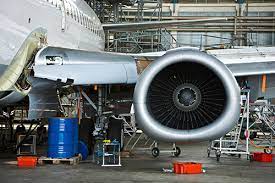
Also, Explore NDT's Role in Space Technology: Enhancing Mission Reliability
Key NDT Techniques in Aviation
Here’s a detailed breakdown of each of the major Non-destructive Testing methods used in aviation:
1. Ultrasonic Testing
Ultrasonic Testing (UT) is a fundamental Non-destructive Testing Technique used in aviation to assess the structural integrity of critical components.
Ultrasonic testing employs high-frequency sound waves, typically above the range of human hearing (1 to 10 megahertz or MHz ), to penetrate materials and identify internal defects or irregularities.
This method helps in examining various aircraft components, including wings, engine parts, and landing gear, where hidden flaws could compromise safety.
During an Ultrasonic Testing Inspection, a specialized transducer emits ultrasonic waves into the material being tested.
These waves travel through the material until they encounter a boundary or defect.
When they interact with these elements, they reflect to the transducer, which then analyzes the returning signals.
By measuring the time it takes for the sound waves to return and the intensity of the reflections, UT provides precise information about the size, location, and nature of defects.
The versatility of Ultrasonic Testing makes it an indispensable tool in aviation, ensuring that aircraft components are free from hidden structural issues.
It is particularly effective for assessing components made from a wide range of materials, including metals and composites.
With its ability to detect internall defects without damaging the material, UT plays a crucial role in maintaining the airworthiness and safety of aircraft.
2. Eddy Current Testing
Eddy Current Testing is a Non-destructive Testing Method like UT to evaluate the structural integrity of aircraft components, particularly the conductive materials.
ET relies on electromagnetic induction to identify surface and subsurface flaws, making it well-suited to inspect engine blades, airframes, and fasteners.
During an Eddy Current Inspection, a probe containing a coil generates an alternating current that induces eddy currents in the conductive material being tested.
These eddy currents, in turn, produce their electromagnetic fields.
When the probe encounters a flaw, such as a crack or corrosion, the electromagnetic field is disturbed.
This change is detected and analyzed by the instrument, providing insights into the location, size, and nature of the defect.
Eddy Current Testing is highly effective for detecting surface and near-surface anomalies in metallic components, which are common in Aviation Applications.
Using eddy current equipment, corrosion on the inside of thin metals, like the aluminum used in aircraft skin, can be found and measured.
When corrosion is present on the second and third layers of metal but cannot be seen using ultrasound, it can be found using low-frequency probes.
Its non-invasive nature allows for thorough inspections without damaging the material.
ET is particularly important for ensuring the safety and reliability of aircraft structures and fasteners, contributing to the overall airworthiness of the aircraft.
3. Radiographic Testing
Radiographic Testing (RT) is a powerful non-destructive testing technique used in aviation to create images of the internal structure of critical components.
RT relies on X-rays or gamma rays to penetrate materials and reveal internal defects, including voids, inclusions, weld discontinuities, and other irregularities.
This method is exceptionally effective for assessing complex components in aviation, such as turbine blades, welds in aircraft structures, and composite materials.
During an RT inspection, X-rays or gamma rays are directed at the material under examination.
As these rays pass through the material, they are absorbed to varying degrees depending on the material's density and thickness.
The remaining rays reach a detector, creating an image that represents the internal structure of the component.
By analyzing the resulting radiographic image, inspectors can identify and assess defects and irregularities within the material.
RT is a critical NDT Technique in aviation, providing insights into the hidden structural aspects of components that may not be visible during visual inspections.
Its ability to detect internal defects and irregularities without damaging the material is crucial for ensuring the safety and reliability of aircraft components.
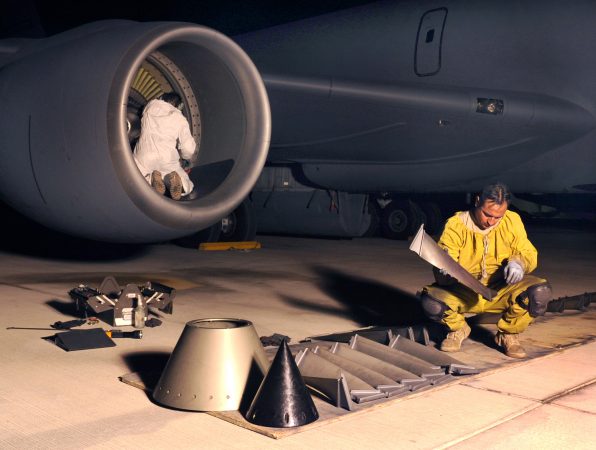
Benefits of NDT Techniques
NDT Techniques offer numerous advantages and Applications in the Aerospace sector.
These techniques provide precise and reliable information about the structural health of aircraft components, ensuring safety, reducing maintenance costs, and extending the service life of aircraft.
Given below are the major benefits:
1. Safety Assurance
NDT Methods are at the forefront of ensuring the safety of aircraft.
By detecting defects and anomalies in critical components, NDT prevents catastrophic failures and accidents, safeguarding the lives of passengers and crew.
On the flip side not performing the NDT methods properly can affect the safety of the aircraft.
An example would be the crash of Eurocopter AS 332L1 Super Puma, a Norwegian helicopter.
A fatigue crack in the spline of a power transmission shaft connector caused a deadly accident that killed all twelve people on board.
The cracks were developing slowly over many days before the accident but the maintenance staff failed to detect it.
Here comes the Importance of NDT which helps in identifying such defects and ensures safety.
2. Cost Savings
NDT helps reduce maintenance costs by identifying issues early in a component's life cycle.
This proactive approach minimizes the need for costly repairs and replacements, ultimately saving money for airlines and manufacturers.
3. Extended Service Life
Through regular NDT Inspections, aerospace components can be monitored and maintained, extending their operational life.
This is especially valuable for military aircraft, which often have longer service lives.
Detecting cracks earlier before they propagate deep through the structural frame gives an opportunity to rectify them easily.
4. Reduced Downtime
Efficient NDT practices decrease aircraft downtime, ensuring that they spend more time in the air and less time in maintenance.
5. Regulatory Compliance
NDT is essential for meeting aviation safety regulations and certifications, ensuring that aircraft comply with the highest standards of airworthiness.
This is especially critical in the aircraft and aerospace industry which mandates strict compliances and standards for the aircraft.
Aviation authorities worldwide, such as the Federal Aviation Administration (FAA) and the European Union Aviation Safety Agency (EASA), have strict regulations and certification requirements.
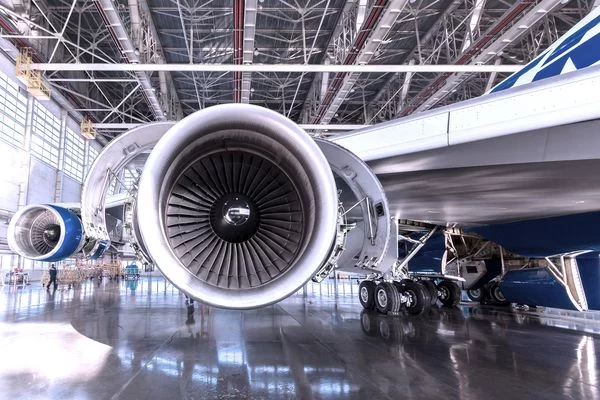
Why Aerospace Sustainability Matters
Aerospace sustainability is crucial for both environmental and economic reasons.
It involves the development of eco-friendly materials, efficient manufacturing processes, and sustainable aviation practices to reduce the environmental impact of the Aerospace Industry.
In an era where climate change and environmental concerns are at the forefront of global issues, the aerospace industry is not exempt from the call for sustainability.
There are several reasons why aerospace sustainability matters:
1. Environmental Impact
The Aerospace Industry is a significant contributor to greenhouse gas emissions.
Sustainable practices aim to reduce the carbon footprint through fuel-efficient aircraft, alternative propulsion systems, and reduced emissions during manufacturing and operation.
2. Resource Conservation
Sustainable aerospace practices emphasize the responsible use of resources, such as materials, water, and energy, to reduce waste and minimize the industry's environmental impact.
Sustainability is not just about environmental responsibility; it's also about cost savings.
Energy-efficient aircraft and streamlined manufacturing processes can lead to a reduction in the operational costs of airlines.
3. Public Image and Regulation
There is increasing public pressure for environmentally responsible business practices.
Airlines and aerospace manufacturers need to adapt to meet these expectations.
Moreover, regulatory bodies are imposing stricter emissions standards and environmental regulations on the industry.
4. Innovation and Competitiveness
Pursuing sustainability drives innovation in aerospace.
Companies that invest in eco-friendly technologies and practices position themselves as leaders in a changing market.
Sustainability in aerospace is a multifaceted goal that encompasses various aspects, including Aircraft Design and Manufacturing Processes, operational efficiency, and end-of-life considerations.
It is a necessary step to mitigate the industry's environmental impact and secure a more sustainable future for aviation.
Making Aerospace NDT Better for the Planet: A Sustainable Transformation
The Aerospace Industry, renowned for its groundbreaking technological achievements and global connectivity, is now turning its attention to sustainability.
This transition encompasses all aspects of aviation, including the often overlooked but critically important field of Non-destructive Testing.
As the industry embraces eco-conscious practices, Aerospace NDT is evolving to be more environmentally friendly, driving innovations that reduce waste, enhance efficiency, and adapt to greener materials.
1. Reducing Waste: A Paradigm Shift in NDT
One of the primary focuses in making Aerospace NDT more sustainable is reducing waste.
Traditional NDT Processes, while crucial for ensuring safety, have been associated with the generation of waste materials and byproducts that pose environmental challenges.
These include the chemicals and agents used in various NDT Techniques, such as penetrants and developers in liquid penetrant testing.
Recognizing the need for a shift, the Aerospace Industry is now optimizing NDT processes to minimize waste production.
A notable step in this direction is the exploration of eco-friendly penetrants and developers.
By replacing or reformulating traditional chemicals with environmentally responsible alternatives, NDT processes can significantly reduce their environmental impact.
These greener alternatives not only enhance the eco-friendliness of NDT but also contribute to a safer workplace for inspectors.
Efforts are also directed at responsible disposal practices.
Proper handling and disposal of NDT Materials and Products are essential for minimizing environmental harm.
Through stringent disposal protocols and the recycling of certain NDT materials, the aerospace industry aims to reduce its waste footprint while ensuring the integrity of the environment.
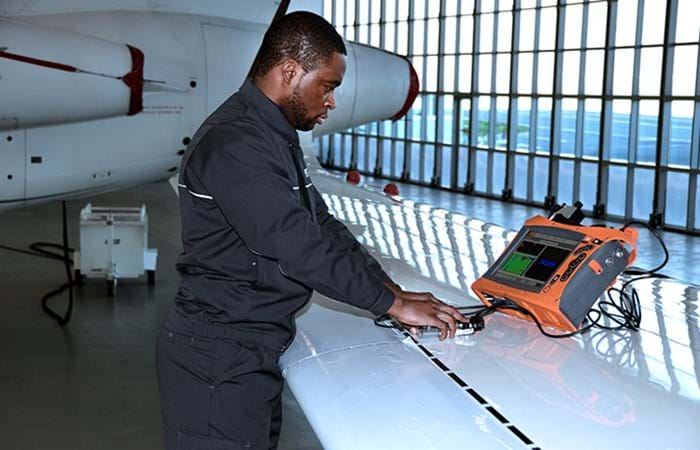
2. Efficiency Improvements: A Win-Win for Aerospace and the Environment
Advancements in NDT Technology are revolutionizing the inspection process, making it not only more efficient but also eco-friendly.
The push for efficiency in NDT aligns with broader sustainability goals, as streamlined processes often translate into reduced resource consumption and lower environmental impact.
Improved equipment and software are at the forefront of these efficiency gains.
Enhanced sensors and data analysis tools have made inspections faster and more precise.
The reduced inspection time contributes to lower aircraft downtime, which in turn, leads to reduced emissions and operational costs.
Aircraft spend more time in the air, fulfilling their primary purpose of transporting people and goods.
Moreover, the use of advanced software allows for quicker assessments and more accurate defect detection.
This not only enhances safety but also contributes to the environmental friendliness of NDT.
Efficient inspections mean fewer reworks and repairs, reducing the consumption of materials and resources.
3. Greener Materials: NDT Adapting to Sustainable Aircraft
A significant pillar of aerospace sustainability is the use of greener materials in aircraft construction.
As the industry explores sustainable alternatives to traditional materials, NDT must adapt to accommodate these new alternatives while ensuring their structural integrity is maintained.
This adaptation is essential to guarantee that the environmental goals of sustainability do not compromise the safety and airworthiness of aircraft.
The development of sustainable materials often involves unique properties and characteristics that differ from conventional ones.
NDT Techniques must be tailored to inspect these materials effectively.
This requires not only the modification of testing protocols but also the continuous development of NDT Equipment and Methodologies.
Ensuring the integrity of these sustainable materials is a critical element of aerospace NDT's contribution to sustainability.
By providing accurate assessments of these materials, NDT facilitates their integration into aircraft construction, which ultimately leads to more environmentally friendly aircraft.
This synergy between sustainable materials and adaptable NDT Techniques represents a significant step toward a greener aerospace industry.
4. Alternative Power Sources: NDT's Carbon Footprint Reduction
In the quest for sustainability, aerospace NDT is also exploring alternative power sources for its equipment.
Traditional NDT Instruments often rely on electricity or other non-renewable energy sources.
Research is ongoing to develop NDT Equipment that can operate using alternative and eco-friendly power sources, such as solar or battery power.
Reducing the carbon footprint of NDT Inspections is essential in aligning with the industry's broader sustainability goals.
By transitioning to alternative power sources, NDT not only reduces its environmental impact but also contributes to the overall reduction in emissions associated with aerospace operations.
5. Waste Reduction in Manufacturing: A Holistic Approach to Sustainability
Sustainable practices extend beyond NDT Inspections themselves and into the aircraft manufacturing process.
By minimizing defects and waste during the manufacturing phase, the frequency of inspections can be reduced.
This leads to a more eco-friendly approach that mitigates the environmental impact of NDT Processes.
Aircraft manufacturing processes are evolving to incorporate sustainability as a core principle.
By focusing on precision and quality in the manufacturing process, manufacturers aim to minimize defects and waste.
This reduction in defects directly correlates with a reduced requirement for inspections, leading to a more environmentally responsible approach.
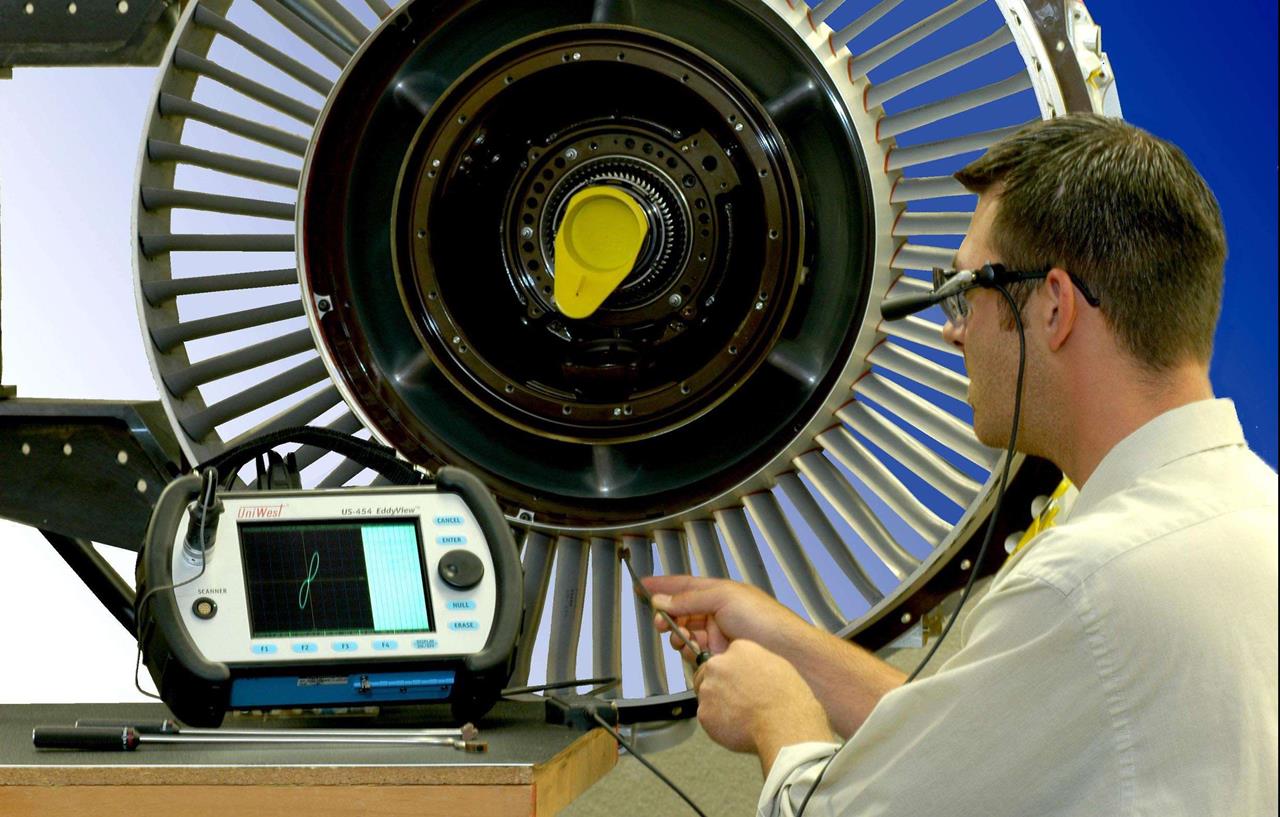
6. A Sustainable Transformation for Aerospace NDT
The Aerospace Industry's journey toward sustainability encompasses every facet of aviation, including NDT.
The efforts to make aerospace NDT more environmentally friendly involve reducing waste, enhancing efficiency, accommodating greener materials, transitioning to alternative power sources, and adopting sustainable manufacturing practices.
These initiatives are part of the broader commitment to a greener and more responsible future for aviation, where safety and sustainability go hand in hand.
Aerospace NDT's role in this transformation is not just about ensuring the airworthiness of aircraft; it's about safeguarding the planet for future generations.
Aerospace sustainability is another critical facet, pushing NDT towards environmentally friendly practices, waste reduction, and greener materials.
These efforts reflect the aerospace industry's commitment to responsible and eco-conscious aviation practices.
Aerospace NDT remains unwavering in its mission to guarantee the integrity and safety of aircraft components.
Its importance, particularly in the pursuit of safety and sustainability, is undeniably pivotal, ensuring that the skies remain a realm of safety, excellence, and environmental responsibility.
Conclusion
Aerospace Non-destructive Testing is the silent guardian of aviation, ensuring the safety, reliability, and airworthiness of aircraft components throughout their entire life cycle.
It commences its crucial role during the earliest stages of aerospace technology development, playing a pivotal role in assessing new materials and groundbreaking structural designs.
This vital discipline doesn't fade into the background once the aircraft takes flight; it remains vigilant, monitoring the effects of ageing, fatigue, and operational extremes.
NDT techniques, such as Ultrasonic Testing, Eddy Current Testing, and Radiographic Testing are indispensable in detecting defects, anomalies, and potential weaknesses without causing damage.
They serve as the first line of defense against structural flaws and hidden defects.
The benefits are manifold, from ensuring safety and reducing maintenance costs to extending the service life of aircraft and meeting rigorous regulatory standards.
Key Takeaways
- NDT, or Non-destructive Testing, in aerospace, is a set of techniques and methods used to evaluate the structural integrity and safety of aircraft components without causing damage.
- Non-destructive testing is essential for ensuring the safety and reliability of aircraft components without causing any damage.
- Key NDT Techniques, such as ultrasonic testing, eddy current testing, and Radiographic Testing, are integral to the aviation industry.
- NDT plays a pivotal role in ensuring the safety of aircraft by detecting defects, irregularities, and signs of wear in critical components.
- Sustainability in aerospace matters for environmental and economic reasons. NDT is evolving to be more eco-friendly and efficient.
- Sustainable aerospace development faces challenges related to reducing emissions, optimizing manufacturing processes, and adopting eco-friendly materials.
- NDT helps reduce maintenance costs by identifying issues early in an aircraft component's life cycle, allowing for proactive maintenance and avoiding costly repairs and replacements.
References
1. IPCS Automation
2. Eddyfi
3. SONOTEC
4. Design Engineering
5. NDT Systems









